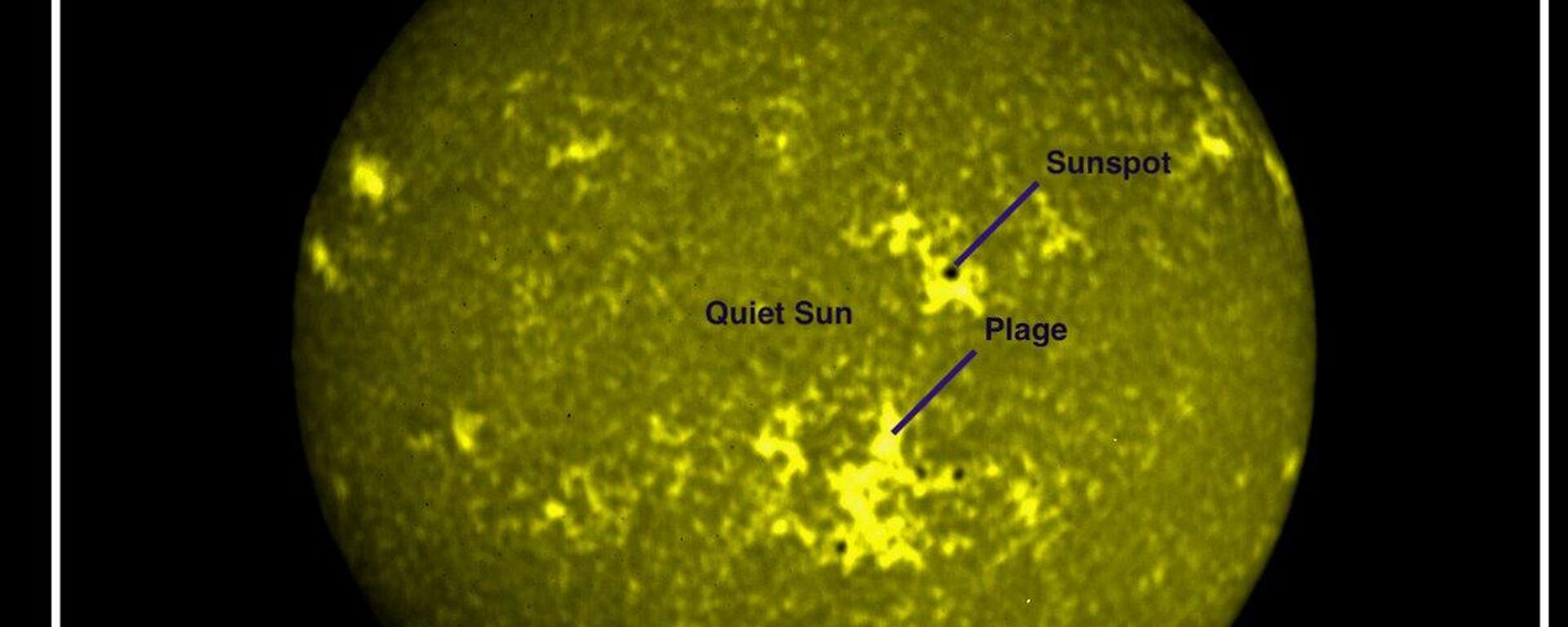https://sputniknews.in/20231220/indias-aditya-l1-spacecraft-expected-to-reach-lagrange-destination-early-january-5903787.html
India's Aditya-L1 Spacecraft Expected to Reach Lagrange Destination Early January
India's Aditya-L1 Spacecraft Expected to Reach Lagrange Destination Early January
Sputnik India
Aditya-L1 mission, which has been functioning according to the plans of ISRO and is expected to reach its destination in the next few weeks, recently sent Sun's complete images back to Earth.
2023-12-20T20:26+0530
2023-12-20T20:26+0530
2023-12-20T20:26+0530
science & tech
science & tech
india
indian space research organisation (isro)
space industry
space exploration
space rocket
https://cdn1.img.sputniknews.in/img/07e7/0b/08/5301128_0:160:3072:1888_1920x0_80_0_0_88851105cbee91d7f6065862d408b712.jpg
India’s Aditya-L1 mission to study the Sun will reach its destination during the first week of next month, the country’s Minister of Science and Technology Jitendra Singh said.Launched by the Indian Space Research Organisation (ISRO) in February this year, Aditya-L1 reached a major milestone a few weeks ago and captured the first complete images of the Sun.The craft's Solar Ultraviolet Imaging Telescope (SUIT) took the images using its various filters to capture the Sun's photosphere and chromosphere in a specific wavelength range.Meanwhile, the ISRO hopes the observations will help in understanding the magnetized solar atmosphere, which in turn could provide significant insights into the impact of solar radiation on the Earth’s climate, reports said.“Using the special vantage point L1, four payloads directly view the Sun and the remaining three payloads carry out in-situ studies of particles and fields at the Lagrange point L1, thus providing important scientific studies of the propagatory effect of solar dynamics in the interplanetary medium," the ISRO wrote on its website about the mission.
https://sputniknews.in/20231209/aditya-l1-mission-captures-full-disk-images-of-sun--5772796.html
india
Sputnik India
feedback.hindi@sputniknews.com
+74956456601
MIA „Rossiya Segodnya“
2023
Sushil Kumar
https://cdn1.img.sputniknews.in/img/07e7/0a/14/4972259_0:0:613:612_100x100_80_0_0_f89d4c7eaa17d23ebb41934f3e07e508.jpg
Sushil Kumar
https://cdn1.img.sputniknews.in/img/07e7/0a/14/4972259_0:0:613:612_100x100_80_0_0_f89d4c7eaa17d23ebb41934f3e07e508.jpg
News
en_IN
Sputnik India
feedback.hindi@sputniknews.com
+74956456601
MIA „Rossiya Segodnya“
Sputnik India
feedback.hindi@sputniknews.com
+74956456601
MIA „Rossiya Segodnya“
Sushil Kumar
https://cdn1.img.sputniknews.in/img/07e7/0a/14/4972259_0:0:613:612_100x100_80_0_0_f89d4c7eaa17d23ebb41934f3e07e508.jpg
jitendra singh, indian space research organization (isro), solar ultraviolet imaging telescope, solar atmosphere
jitendra singh, indian space research organization (isro), solar ultraviolet imaging telescope, solar atmosphere
India's Aditya-L1 Spacecraft Expected to Reach Lagrange Destination Early January
The mission has reportedly gone according to plan and is expected to reach its destination in the next few weeks. It recently sent complete images of the Sun back to Earth.
India’s Aditya-L1 mission to study the Sun will reach its destination during the first week of next month, the country’s Minister of Science and Technology
Jitendra Singh said.
Launched by the Indian Space Research Organisation (ISRO) in February this year, Aditya-L1 reached a major milestone a few weeks ago and captured the first complete images of the Sun.
"Aditya-L1, India’s first solar mission, will reach its destination, Lagrange Point 1, early next month, to be precise, around the first week of January 2024," Singh said.
The craft's Solar Ultraviolet Imaging Telescope (SUIT) took the images using its various filters to capture the Sun's photosphere and chromosphere in a specific wavelength range.
Meanwhile, the
ISRO hopes the observations will help in understanding the magnetized
solar atmosphere, which in turn could provide significant insights into the impact of solar radiation on the Earth’s climate, reports said.
According to the ISRO, a satellite placed in the halo orbit around the L1 point has the major advantage of continuously viewing the Sun without any eclipses.
“Using the special vantage point L1, four payloads directly view the Sun and the remaining three payloads carry out in-situ studies of particles and fields at the Lagrange point L1, thus providing important scientific studies of the propagatory effect of solar dynamics in the interplanetary medium," the ISRO wrote on its website about the mission.



